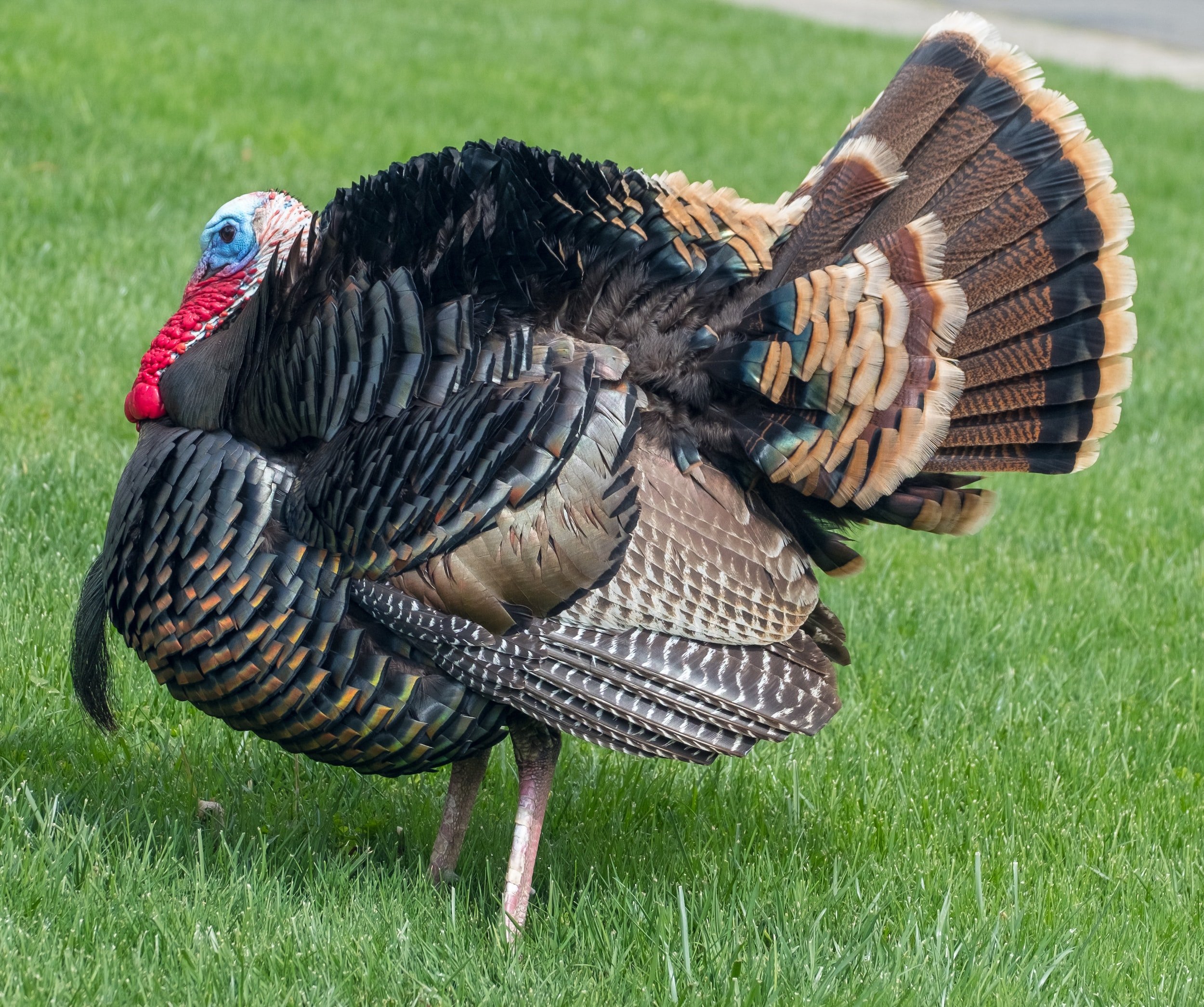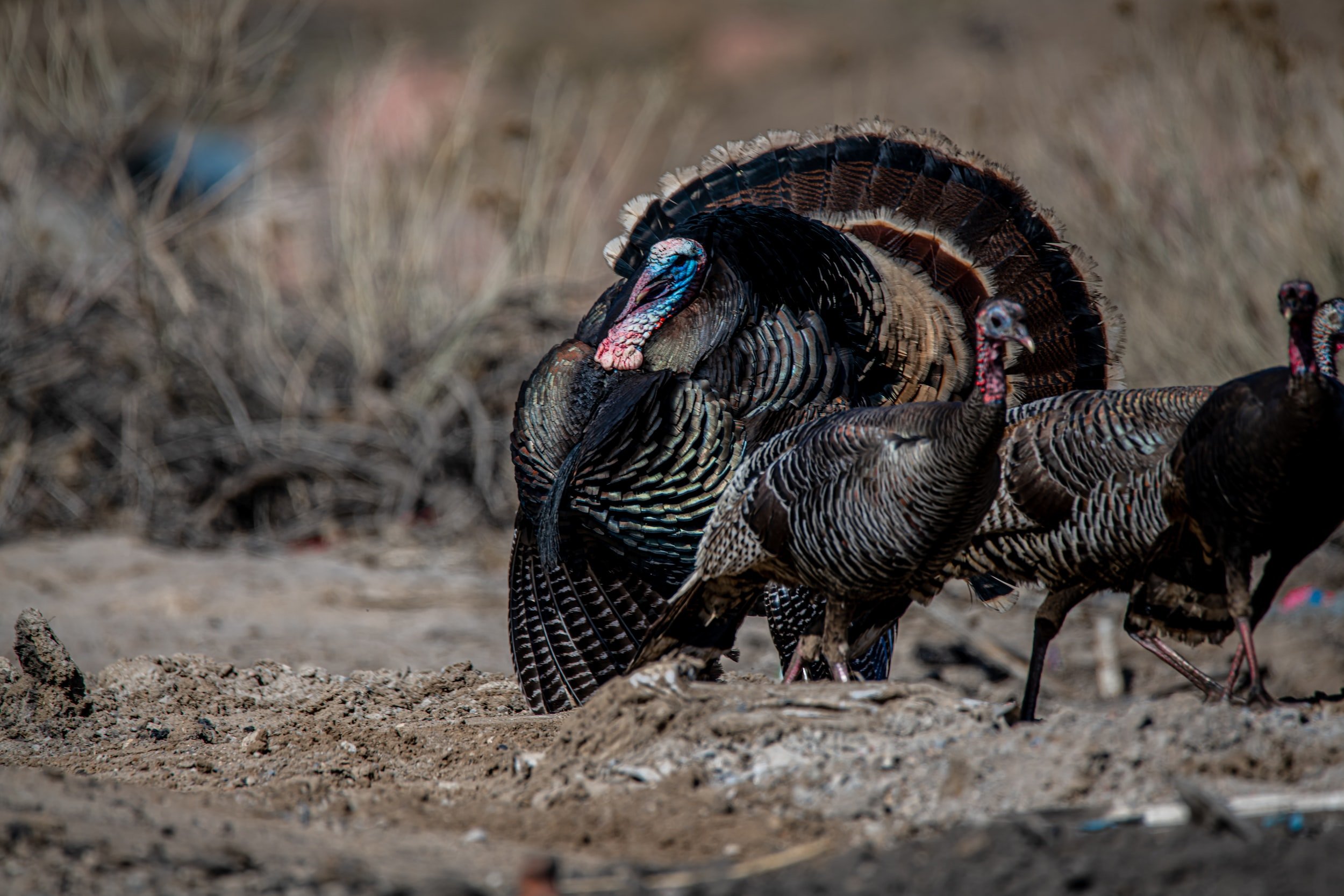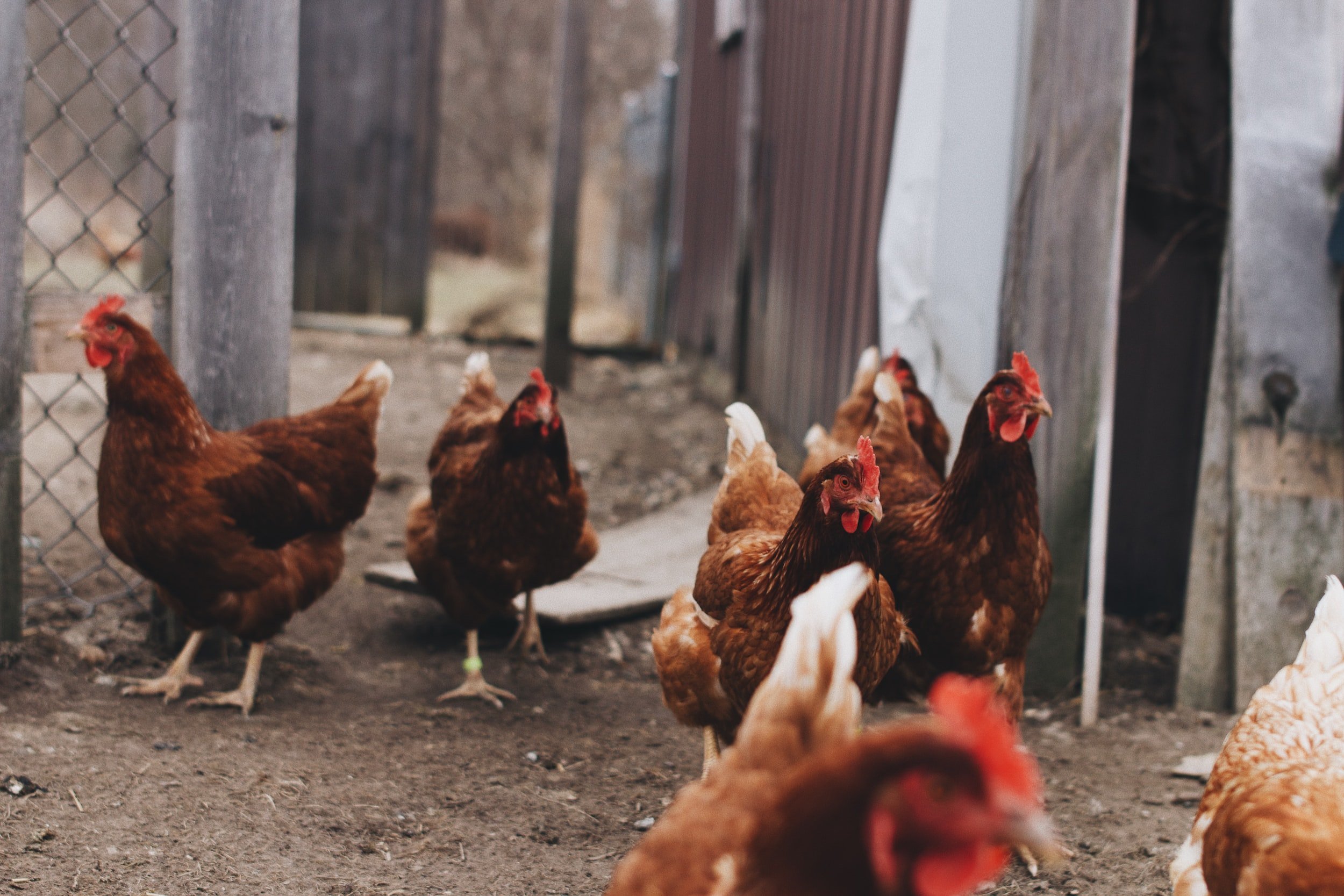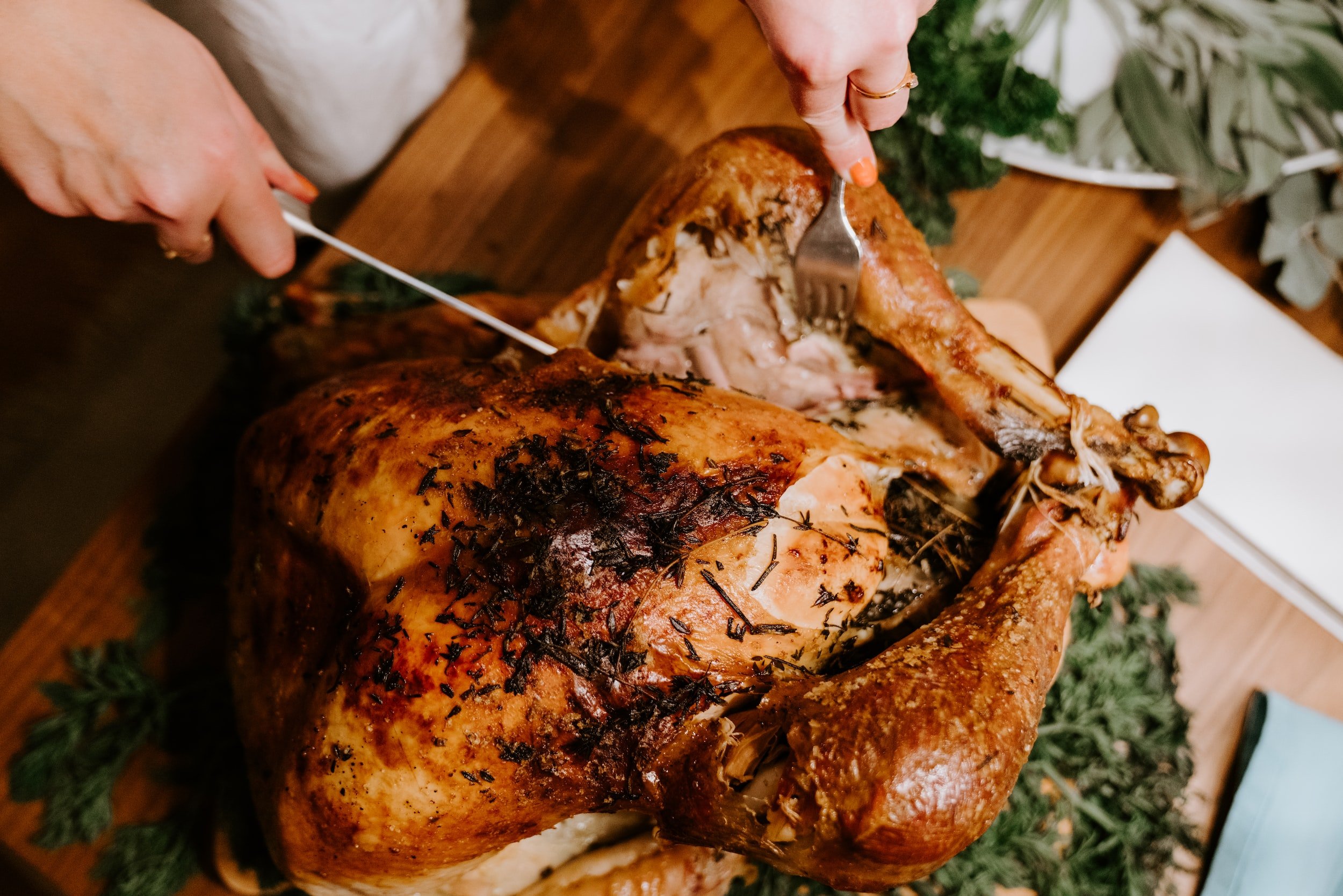Tips for Raising Turkeys: Everything You Need to Know
Raising turkeys from start to finish can be a lot of work, but also so rewarding! Whether you want to raise a couple for your family table or set up an entire business breeding and selling them, having a few birds on the homestead is always fun.
Not sure how to get started? Don’t worry - with some patience and know-how, you’ll soon be a pro!
Read on below for all the tips and tricks needed when it comes to raising turkeys at home.
**J&R Pierce Family Farm is a participant in the Amazon Services LLC Associates Program, an affiliate advertising program designed to allow sites to earn advertising fees by linking to products on Amazon. I often link to Amazon when recommending certain products, and if you choose to purchase, I may earn a small percentage of the sale. It costs you nothing extra, and all recommended products are ones that I personally vouch for.**
Are Turkeys Easy to Raise?
In terms of raising livestock, turkeys are relatively simple to raise. Below is a list that highlights the ways in which raising turkeys may be easier than you think.
They are fairly clean—for birds
They are generally docile
They are not likely to attack (especially if you choose one of the modern breeds that has been domesticated for meat production)
They require little outside of basic needs
They can add humor to your life—yes, turkeys can be hysterical!
Below is a YouTube video with more information on raising turkeys:
What Breed of Turkey Should I Raise?
When it comes to choosing a breed of turkey to raise, consider the main reason why you are raising turkeys as the different breeds will be better for different uses.
Traditional Bronze
When you think of a classic Thanksgiving Day turkey, you are likely picturing a bronze turkey. Bronze turkeys are a good option for small farmers and homestead owners who want to raise turkeys for meat and/or breed them for future generations.
Although traditional bronze turkeys are slow-growers, their meat is said to be flavorful and tender, especially when they are allowed to grow to maturity. Once fully grown, the males weigh around 20 pounds and the females will weigh around 18 pounds.
Broad-Breasted Bronze
The broad-breasted bronze turkey was bred from the traditional bronze as a faster-growing and larger bird—and they were successful. These turkeys are some of the largest birds on the market, weighing as much as 40 pounds when fully matured.
The broad-breasted bronze is a great option for those wanting to raise turkeys for meat.
Not only do these birds grow to a massive size, but they also grow quickly and have a great feed-to-weight ratio—meaning they are efficient eaters. One downside to this breed is that they are often not able to reproduce due to their large size.
Broad-Breasted White
The broad-breasted white turkey is very similar to the broad-breasted bronze—there are actually very few differences.
The most obvious difference is the color; the broad-breasted white is nearly all white, while the broad-breasted bronze has dark brown, black, and white feathers that often have a bronze tint.
The other difference is that the meat from the broad-breasted white will look cleaner, while the dark-colored feathers of the broad-breasted bronze can add some coloration to their meat. Besides these differences, refer to the information previously listed for the broad-breasted bronze.
Bourbon Red
The bourbon red turkey is a heritage breed that is raised for both its meat and egg-laying capacity.
While these birds are not very common, they can still be found on many homesteads. The dark-reddish brown feathers against the white feathers make this a beautifully colored bird, making it popular with those who are raising turkeys more for the fun of it.
While these are still considered meat birds, they can also be kept as egg-layers, laying between 160 to 180 eggs a year.
While not as efficient as many chicken breeds, that’s a good amount of eggs for a turkey.
Pros and Cons of Raising Turkeys
When making any large decision, it’s important to weigh the pros and cons. Below is a list of some of the more prominent pros and cons associated with raising turkeys.
Pros
One of the most important benefits of raising turkeys for many farmers is that they are efficient meat producers. In general, turkeys don’t require an overabundance of food in order to fully mature to a butchering weight. The cost that goes into raising them is inexpensive compared to the amount of meat potential they have.
Another pro when it comes to raising turkeys is that their meat tastes good, particularly from the birds that were raised well. Their meat is also considered a healthier alternative to many other types of meat available on the market.
If you’ve ever raised chickens and have a point for comparison, turkeys are generally cleaner birds—they keep their living area cleared as much as they can—meaning less work for you.
Another comparison to chickens is that turkeys are generally less aggressive than chickens (although most chickens aren’t aggressive in the first place). Turkeys will generally only become aggressive toward animals encroaching on their space; they rarely go after humans.
Finally, turkeys can be humorous to have around. A turkey raised by an individual or family may grow to have a fun personality and even become loyal to its owners.
Some turkeys will even do their best to hang out near your house, and follow you around when you’re outside. It’s not uncommon for turkeys destined for butchering to become family pets instead after winning the hearts of those raising them.
Cons
One aspect of raising turkeys that keeps some farmers or homesteaders away is their need for space. When you allow your turkeys to free range, this isn’t generally an issue; however, if you cannot free range and have to keep them in an enclosure, you’re going to need a very large coop. In fact, most farmers would probably recommend a small barn to properly raise turkeys that cannot free range.
Turkeys with small living quarters generally do not do as well or taste as good as turkeys with ample space.
Another con to raising turkeys is that their young—or poults—can be tricky to raise. When compared to chicks, poults are more delicate and prone to issues that may be life-threatening.
Changes in temperature or light availability can be enough to harm or even kill them. If you are raising poults with chicks, the chicks may even harm the poults, as they are easy to push around.
Finally, it can be an expensive upfront cost to feed your turkeys. While many breeds are efficient in converting feed to meat, the cost can still be high—especially for small farmers and homesteaders who only have a handful of turkeys.
Raising large quantities of turkeys can help offset the cost of feed, but this isn’t realistic for small farms. Another tip is to allow your turkeys access to pasture - this will not only result in healthier birds, but will reduce your overall expenses as well.
How Do You Raise a Turkey Successfully?
There are several things to consider when successfully raising turkeys. Just like any other livestock animal, turkeys require routine—often daily—maintenance and care.
What to Feed Turkeys
If you allow your turkeys to free range, there is a good chance that they will be able to forage for a good portion of the food they need—meaning less food that you need to buy.
Turkeys are likely to nibble on grass and other plants in the area; they will also eat acorns, hickory nuts, walnuts, seeds, and nearly anything else they can find in the nut and seed category.
For feed that cannot be foraged, give your turkeys corn, sunflower seeds, grains, oats, or even store-bought feed to keep things simple.
An approximate guide for the amount of food to provide your turkeys is a half-cup of food, per turkey, per day. It is important to spread this food out over the ground or hay so that they have to root around—this encourages continued foraging.
How Much Water Do Turkeys Need?
Turkeys drink a lot of water; therefore, access to fresh water is highly important and shouldn’t be disregarded. As a general rule, you will need at least one gallon of water, per five turkeys, per day.
Unless you have a commercial-grade waterer, this likely means daily trips out to refill the water for your turkeys.
How Long Does it Take to Raise Turkeys?
The amount of time that it takes to raise a turkey is highly dependent on what type of turkey you are raising. The faster-growing breeds can take as little as 14 weeks to mature and be ready for butchering, while some heritage breeds can take as long as 30 weeks to be ready for butchering.
What Kind of Housing Do Turkeys Need?
When it comes to housing for your turkeys, there is a wide variety of options. For those who only have a few turkeys, a traditional coop with a decent-sized outdoor run may be enough space. This is a popular option for those who are also raising chickens, as they can cohabitate.
When raising turkeys on any sort of scale (i.e. more than six), a coop will likely not be enough space. In these cases, many farmers turn to sheds or even small barns in which to keep their turkeys. However, turkeys should still have access to an outdoor pasture or grass patch when possible.
Perhaps one of the best housing options for your turkeys is no house at all—well, not quite, but close. Free-range turkeys have been known to spend nearly all of their time outside—the brave ones will even sleep outside.
Even if you allow your turkeys to free-range at all times, it is important to make sure they have a covered area where they can stay warm and dry in the event of bad weather.
How to Care for Turkey Poults
As mentioned previously, turkey poults can be difficult to raise due to their non-resilient nature. Poults are highly sensitive to temperature changes, light, and dampness, so it is important to keep these conditions consistent. Poults should never be exposed to a cold draft; this alone can cause them to develop some serious health issues.
A heat lamp is a must for young poults. The heat lamp will also provide the light that they need before venturing outside for the first time.
It is also critically important to keep their bedding dry and clean, meaning changing it as often as possible. Poults have also been known to eat their bedding in place of food.
Therefore, it is sometimes necessary to use paper towels to cover the top of the bedding so they go for the food instead. This is also a tip that works well with baby chicks, by the way!
Common Health Issues in Turkeys and How to Prevent/Treat Them
For the most part, turkeys are healthy birds that don’t often have health concerns as adults. However, there are still some issues that require your attention.
Blackhead is a disease that targets the gastrointestinal area. This disease is caused by a parasite that is unfortunately fairly common and difficult to avoid.
The name comes from one of the symptoms that causes the infected turkey’s head to turn black, although this symptom is not as common. This disease is more likely to cause diarrhea, depression, lethargy, and death.
Unfortunately, there is no treatment for this disease, so it commonly ends in the death of the turkey. While prevention can be tough, the best preventative measure is to not allow contact between your birds and other birds, as the parasite that causes blackhead is almost always spread directly from bird to bird.
Another common health issue is fowlpox, which is a viral infection that spreads from bird to bird. This infection causes scabs and lesions to form on the turkey's neck. If not taken care of, these lesions can lead to further infection.
The best way to prevent fowlpox is to make sure your turkeys get the corresponding vaccine early in life. There are no effective ways to treat fowlpox, but it does not always end in death.
Raising Turkeys With Chickens - Yay or Nay?
To get technical, you can raise turkeys with chickens, and it is a fairly common practice among homesteaders. However, it is generally discouraged as it can lead to more harm than good.
While some have been able to successfully navigate the cohabitation of their chickens and turkeys, raising them together can lead to aggression and the spread of diseases.
It can also be difficult to make sure all of your birds are getting the proper nutrients when kept in the same coop or enclosure. It is certainly a good idea to keep poults away from chicks if nothing else.
Raising Turkeys for Eggs
Turkeys are not known for their ability to lay eggs—well, at least not as much as chickens.
Raising turkeys for their eggs is much less efficient than raising chickens for eggs, though it can certainly be done. Turkeys are not only larger, requiring more food and space, but they tend to produce very few eggs each year.
There are some turkeys, such as the bourbon red, that produce a decent number of eggs. These birds, when not kept for meat, are often kept for a dual purpose—eggs, and companionship.
How to Butcher a Turkey
There are many steps required to properly and humanely butcher a turkey. The key points are killing, plucking, butchering, and packaging.
All four of these steps can be done in a number of ways, so it would be beneficial to do heavy research into your preferred methods before getting started.
As an alternative, you could take your turkey to a professional butcher and know that it is in good hands.
When is a Turkey Ready for Slaughter?
A turkey is ready for slaughter once it has reached a mature weight. As previously discussed, some birds can be ready as early as 14 weeks, while others may take up to 30 weeks.
While some butcher their turkeys early—these are referred to as “young turkeys”—this is not as common of a practice for small farmers because there tends to be much less meat for the same amount of effort.
Final Thoughts
Turkeys are popular among many small farmers and homesteaders, and for good reason.
However, there are some important tips to follow to raise them properly. Before raising turkeys, weigh the pros and cons and take into consideration which breed fits your needs and wants the best.
You’ll have the Thanksgiving turkey ready in no time!—if you have the patience to wait a minimum of 14 weeks and don’t get too attached, that is.
Do you raise turkeys on your farm? Let me know in the comments!
Want to learn more about farming? Be sure to check out these featured articles!
Subscribe to our email newsletter for regular tips and tricks on homesteading and farming – wherever you are. You can also follow us on Instagram (@jrpiercefamilyfarm) and Pinterest (J&R Pierce Family Farm) for frequent updates. Happy homesteading!










